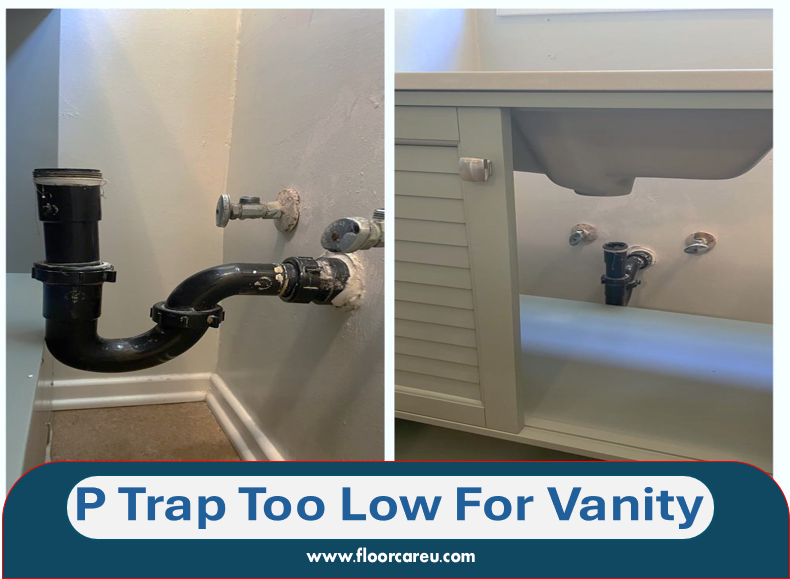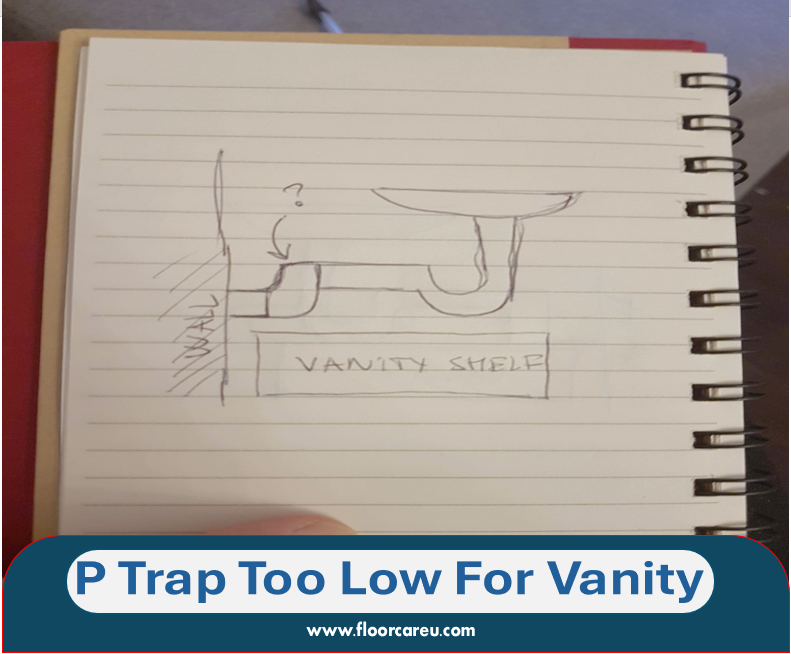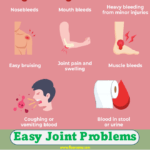P Trap Too Low For Vanity: If the P-trap is too low for a vanity, consider raising the trap arm or modifying the vanity to adjust the height. Addressing this issue is crucial for the proper functioning of the drainage system and should be done in compliance with building codes and regulations.
Whether adjusting the trap arm height, using a bottle trap, or modifying the vanity to accommodate the P-trap, various options are available to resolve this problem. Understanding how to correct the P-trap height ensures your plumbing system’s efficient and effective operation in the long run.
If you’re facing a low P-trap situation, it’s important to take the necessary measures to rectify it promptly to avoid potential drainage issues.
Common Problems
When installing a new vanity, one common issue that may arise is the P-trap being too low for the vanity. This can lead to various complications that must be addressed to ensure proper plumbing functionality and avoid potential water damage. Understanding the common problems associated with P-trap height versus vanity requirements is essential for homeowners and DIY enthusiasts undertaking bathroom remodeling projects.
P-trap Height Vs. Vanity Requirements
When installing a new vanity, it’s important to consider the specific P-trap height requirements. The P-trap, which prevents sewer gases from entering the bathroom and maintains a water seal, should be positioned at an appropriate height to accommodate the new vanity. Failure to align the P-trap height with the vanity requirements can result in installation challenges and potential plumbing issues.
Impact Of Incorrect P-trap Placement
Incorrect placement of the P-trap can have significant consequences, impacting the overall functionality and aesthetics of the vanity installation. When the P-trap is too low for the vanity, it may restrict access to the lower drawers or storage spaces, leading to inconvenience for the users. Moreover, a low P-trap can hinder proper drainage, potentially causing water backup and related plumbing problems.
Ensuring that the P-trap is installed at the appropriate height relative to the vanity is crucial for maintaining optimal functionality and minimizing the risk of future complications.
When encountering a P-trap that is too low for a new vanity, it’s essential to explore viable solutions to rectify the issue and ensure proper installation.

Identifying The Issue
When installing a new vanity, one common issue that homeowners may encounter is a P-trap that is too low. A P-trap is an essential plumbing system component that prevents sewer gases from backing up into your home. When the trap arm, the horizontal pipe that connects the sink drain to the P-trap, is positioned too low, it can lead to problems such as inefficient drainage and potential leaks. Identifying the exact cause of the low P-trap can help you find the right solution. Here are a few steps to help you evaluate and measure the P-trap alignment.
P-trap Alignment Evaluation
The first step in identifying the issue with a low P-trap is to evaluate its alignment. A P-trap that is too low often results from poor installation or improper adjustments. Check if the P-trap is properly aligned with the sink and main waste drain. Additionally, inspect the trap arm to ensure it is angled properly and not sloping downward too much, which can cause the P-trap to be positioned too low.
Measuring And Comparing Heights
Measuring the heights of the P-trap, sink drain, and main waste drain is crucial in identifying the extent of the misalignment. Using a tape measure, measure the height from the floor to the bottom of the P-trap. Then, measure the height from the floor to the bottom of the sink and main waste drain. Write down these measurements and compare them to determine the difference in heights.
Knowing the height difference will help you determine the most suitable solution for your situation. Whether it requires raising the P-trap, adjusting the trap arm, or considering alternative options such as using a bottle trap or modifying the vanity, understanding the measurements is key.
By evaluating the P-trap alignment and measuring the heights of the different components, you can effectively identify the issue of a too low P-trap for your vanity. With this information, you can then find the appropriate solution to ensure proper drainage and prevent any potential plumbing issues in the future.
Solutions For Low P-trap
When facing a low P-trap situation with a vanity, solutions include cutting a slot in the shelf, raising the drain pipe, or modifying the vanity to accommodate the trap arm. This ensures proper alignment and allows for effective water flow from the sink.
If you have a low P-Trap in your vanity, don’t worry! There are several solutions available to help you fix this problem. In this section, we will discuss three possible solutions: raising the Drain Pipe, Using a Bottle Trap, and Modifying the Vanity.
Raising The Drain Pipe
One solution to address a low P-Trap is by raising the drain pipe. This involves opening the wall to access the pipes and adjusting their height. Here is a step-by-step guide on how to raise the drain pipe:
- Start by loosening the nut on the trap and turning it towards the wall.
- Tighten the nut to secure the trap in its new position.
- Next, remove the tailpiece that’s currently in the trap.
- Place a strainer into the sink and measure the distance from the filter to the desired height of the P-Trap.
- Finally, cut the drain pipe to the measured length and install the P-Trap at the new height.
This method requires some DIY skills and plumbing knowledge, so you should seek professional help if you are unsure.
Using A Bottle Trap
If raising the drain pipe is not feasible or allowed by building codes, another solution is to use a bottle trap. A bottle trap is a compact, space-saving plumbing device that can be installed easily without modifying existing pipes. Here’s how to use a bottle trap:
- Remove the existing P-Trap from the vanity’s drainage pipe.
- Install the bottle trap in place of the P-Trap.
- Make sure to follow the manufacturer’s instructions for proper installation.
It’s important to note that using a bottle trap may not always provide enough clearance for the vanity shelf, so check the dimensions and requirements before opting for this solution.
Modification Of Vanity
If the above solutions are unsuitable for your situation, you can consider modifying the vanity. Here are the steps to lower the shelf of the vanity:
- Cut a slot on the shelf to allow room for the existing P-Trap.
- Use a tool like a Dremel to make the necessary adjustments.
- Ensure that the modified section is securely attached to maintain the structural integrity of the vanity.
Modifying the vanity might be a more challenging option, especially if you are not experienced in carpentry or woodworking. If unsure, consult a professional to avoid damaging the vanity or potential plumbing issues.
In conclusion, if you have a low P-Trap in your vanity, there are solutions available to help you overcome this issue. Whether it’s raising the drain pipe, using a bottle trap, or modifying the vanity, choose the solution that best fits your needs and seek professional help whenever necessary to ensure a successful fix.
Diy Fixes
Looking for DIY fixes for a P trap that is too low for your vanity? You can try raising the drain pipe, cutting a slot in the shelf for the existing trap, or modifying the vanity to lower the shelf.
However, it is important to consult local building codes before modifying them.
Cutting A Slot In The Shelf
If the P-trap is too low for the vanity, one DIY fix is cutting a shelf slot to accommodate the trap. This can be done by following these steps:
- Measure the height needed for the P-trap and mark it on the shelf.
- Use a jigsaw to cut a slot on the shelf according to the measured height.
- Test the fit of the P-trap to ensure it fits properly in the slot.
Altering The Vanity Structure
Another DIY fix is to alter the structure of the vanity to create more space for the P-trap. This can be achieved by:
- Removing the vanity’s bottom panel creates extra room for the P-trap.
- Utilizing a Dremel tool to carefully adjust the interior structure of the vanity to fit the P-trap.
Adapting Drain Connection
If the above methods are not feasible, another option is to adapt the drain connection to accommodate the P-trap better. This involves:
- Loosening the existing drain connection.
- Maneuvering the P-trap’s exit to align with the drain connection.
- Tightening and securing the adapted drain connection.
Professional Assistance
Consulting A Plumber
When the P-trap is too low for the vanity, seeking the expertise of a licensed plumber is essential. Plumbers have the knowledge and experience to assess the plumbing system effectively and provide appropriate solutions to address the issue.
Ensuring Code Compliance
Ensuring that the plumbing work complies with local building codes is crucial to avoid potential hazards and ensure the proper functioning of the drainage system. Plumbers are well-versed in local regulations and can make necessary adjustments to meet code requirements.

Frequently Asked Questions Of P Trap Too Low For Vanity
What Do I Do If My P-trap Is Too Low?
If your P-trap is too low, raise the trap arm to the proper height. You may need to cut a slot in the wall and adjust the drain pipe. Alternatively, consider using a bottle trap, modifying the vanity, or consulting a professional plumber for assistance.
Can The P-trap Be Lower Than The Drain?
The P-trap should not be lower than the drain as water needs to flow naturally without gravity force. Adjust height accordingly.
How Low Can A Sink P-trap Be?
A sink P-trap should typically be no lower than 4 inches below the drain.
Does P-trap Height Matter?
Yes, the P-trap height matters as it ensures proper drainage and prevents sewer gas backup.
Can I Raise A Too Low P-trap For My Vanity?
Yes, you can raise a too low P-trap by opening the wall and raising the drain pipe or using a bottle trap.
Is It Possible To Have The P-trap Below The Drain?
Ideally, the P-trap should be attached directly to the drainage and above the drain to allow gravity to naturally flow the water downwards.
Conclusion
Ensuring the P trap is positioned correctly and preventing drainage issues is imperative. Adhering to local plumbing codes and using appropriate tools can effectively raise a low P trap for your vanity. Seek professional guidance if necessary to address this common plumbing concern.
You can enjoy a fully functional and aesthetically pleasing vanity with the necessary adjustments.


